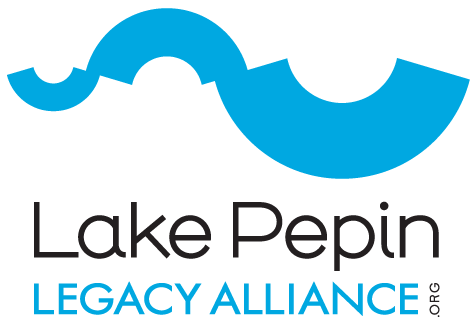By: Bill Mavity, LPLA Member & Council of Champions
“Independent people who think for themselves and are competent to do it because they are enlightened, they read and are abreast of the best and newest thought.” That was Mark Twain’s characterization of the people he encountered in his travels as a steamboat pilot along the upper Mississippi River including Lake Pepin in 1882 that he described in “Life on the Mississippi River” in 1883.
Mark Twain’s influence, bringing me to respect, understand and love the Mississippi River and Lake Pepin began in 1954. My social studies teacher at my high school had the class read and discuss “The Adventures of Tom Sawyer” and “The Adventures of Huckleberry Finn.” Those stories fascinated me and filled me with envy, particularly at the exploits of Huckleberry Finn floating down the River.
In 1955, Bill Mavity and three friends spent their school vacation floating down the Illinois River to the Mississippi River on a homemade raft.
I knew I was the luckiest kid in my school when my Dad got me (I has just turned 17) a job as a deckhand for the summer of 1955 on a towboat – The Charles W. Snider – under contract with Pure Oil. For the entire summer I worked on that towboat as it pushed empty barges down the Mississippi River and west to Port Arthur Texas and then brought bring petroleum products back up the Mississippi River and the Illinois River to the Refineries at Lamont, Illinois.
Photo Credit: Larry Nielson
Three months on the barges working seven days a week – around the clock six hours on and six off – becoming a deckhand and enjoying the beauty of the River. On my daylight off hours, I read Twain’s Life on the Mississippi while sitting at the front of one of the lead barges as we went down the River.
Jane and I shared a passion for the River. Jane was born in St. Louis and her family had a boat on the River, one year coming all the way up the River to St. Paul with her family.
We bought our first house in South Minneapolis in 1977 and sometimes canoed on the River between Minneapolis and St. Paul. Living in Minneapolis, we could truly say, the River runs through us. Minneapolis drinking water is taken from the Mississippi River. Now we live on the River overlooking Lake Pepin and our water comes from an aquifer many feet below the River. The River no longer runs through us.
In 1987 we bought land on the bluffs overlooking Lake Pepin, in the township of Stockholm across from the village of Frontenac. In 1990 we built a second home that we hoped would become our retirement home. In our visits to Lake Pepin we were surprised and amazed by the beauty of Lake Pepin and its surrounding bluffs and valleys, and the charm of the villages along the Great River Road.
We spent most weekends there until 2003 when we moved there full time to begin our transition to retirement. We enjoyed both sailing and motor boating and made many friends along the west coast of Lake Pepin.
For ten years it was all pleasure and beauty looking out at Lake Pepin every day.
Why We Joined LPLA
In 2011 things changed. We became aware of the plans of Wexford Capital and its affiliate Muskie Corp to build a frac sand processing plant, and rail and barge loading facilities on Lake Pepin directly across from Lake City and just north of the Red Wing YMCA camp and the residential development at Deer Island. This 24/7 frac sand operation would involve approximately 600 trucks per day, and the noisy barge and rail loading would operate all day with bright night lighting destroying the peace and joy of boaters who moored and sailed out of the Lake City Marina.
It would have killed the tourism business along the Great River Road in Wisconsin.
Joining with about 20 other committed residents and business owners from the Wisconsin Lake Pepin towns and villages we stopped the project. We drafted and got the County Board to pass a zoning ordinance to ban frac sand operations along the Great River Road from the Chippewa River to the border between Pepin County and Pierce County near the Village of Maiden Rock.
Over the next several years we learned about the efforts of dedicated people from the Minnesota side of upper Lake Pepin also committed to preserving as best they could the beauty of Lake Pepin. They were working with both states and their local elected officials and agencies to slow the flow of sediment filling up of the upper part of Lake Pepin and to restore and preserve the habitat and ecology of the plant and wild life that once thrived there, and the access to recreational enjoyment of the Lake.
We met those people. Scott and Anne Jones, Suzanne Blue, Arlin and Marilyn Albrecht, Mike McKay and Rylee Main were the kind of people that Twain encountered in 1882 when he visited Lake Pepin and the Red Wing area: “Independent people who think for themselves and are competent to do it because they are enlightened, they read and are abreast of the best and newest thought.”
Twain would have been pleased with the efforts of LPLA. Jane and I are proud to be members and to have the opportunity to help it succeed.



